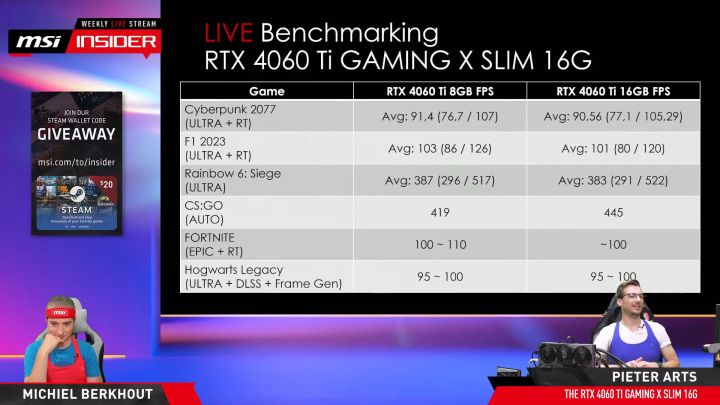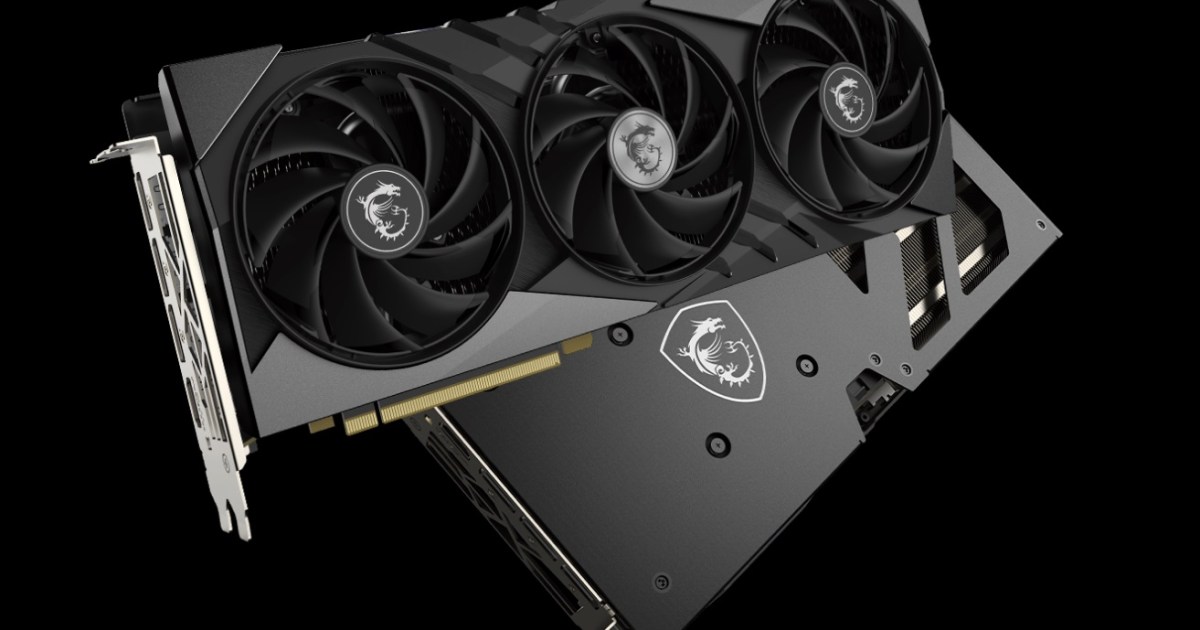The Nvidia RTX 4060 Ti 16GB has quietly made its debut, lacking the promotion usually associated with top-tier graphics cards. This lack of advertising may be attributed to its inferior performance compared to other options on the market. Due to this, there is limited information available through early benchmarks.
MSI has released some benchmarks comparing the 8GB and 16GB versions of the RTX 4060 Ti. Surprisingly, the newer GPU appears to be slower. This could explain why Nvidia did not develop its own version of this card.
The RTX 4060 Ti 16GB has some peculiarities. Normally, reviewers receive test units ahead of a GPU’s release to allow for early reviews. Nvidia also typically creates its own Founders Edition GPUs to coincide with those made by its board partners. However, Nvidia has not provided any test units to the media for this model and did not prepare a Founders Edition GPU.
The lackluster performance of the RTX 4060 Ti may be the reason for this unusual situation. Fortunately, MSI shared some comparison data in its weekly podcast. Although the episode has been made private, TechPowerUp managed to capture the information before it was taken down.
MSI’s testing may not have been exhaustive, so the benchmarks could potentially fare better. However, the current information suggests that the 16GB RTX 4060 Ti performs slightly worse in games such as Cyberpunk 2077, F1 2023, Rainbow 6: Siege, and Fortnite compared to the 8GB version. It delivers similar performance in Hogwarts Legacy, but the limited VRAM on the 8GB version hampers its potential. The 16GB RTX 4060 Ti does achieve a victory in CS:GO, reaching 445 fps compared to the previous model’s maximum of 419 fps.

Realistically, the RTX 4060 Ti was never intended to be a top-performing GPU. It shares the same specifications as the 8GB version, with the only difference being the increased VRAM. Unfortunately, the addition of 16GB VRAM on a 128-bit bus does not deliver the expected improvements. Furthermore, the nearly identical Total Graphics Power (TGP) of both cards does not aid in distinguishing their performance.
Considering the minimal differences in performance across the board, spending an additional $100 on the 16GB version is difficult to justify. It would be more sensible to invest in the RTX 4070, which offers 12GB of memory and overall superior specifications. Nvidia’s confusing pricing strategy persists, making GPU purchases in this generation uncertain as higher prices do not necessarily translate to better performance.
This GPU initially seemed like a peace offering from Nvidia, addressing concerns over the 8GB VRAM in the 4060 Ti by releasing a version with additional memory. However, this GPU’s performance may prove that simply increasing VRAM is not enough – the rest of the card’s architecture must be optimized to fully utilize it.
Editors’ Recommendations
Denial of responsibility! TechCodex is an automatic aggregator of the all world’s media. In each content, the hyperlink to the primary source is specified. All trademarks belong to their rightful owners, and all materials to their authors. For any complaint, please reach us at – [email protected]. We will take necessary action within 24 hours.
Alex Smith is a writer and editor with over 10 years of experience. He has written extensively on a variety of topics, including technology, business, and personal finance. His work has been published in a number of magazines and newspapers, and he is also the author of two books. Alex is passionate about helping people learn and grow, and he believes that writing is a powerful tool for communication and understanding.


